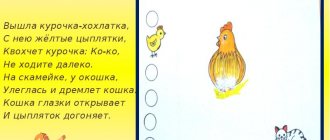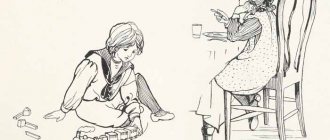Presentation for the lesson about the world around us “It’s all in the hat...”
It's all about
in Shlyapka...
Prepared by a primary school teacher
GBOU Secondary School
No.
6 Zhigulevsk, Samara region Pererva Lyudmila Dmitrievna
History of hats
Once upon a time, a headdress served as a symbol of power and might.
For example, in Ancient Egypt, only the pharaoh could wear a large scarf made of striped fabric, on which a crown was placed. Everyone else, except slaves, were content with wigs made of plant fiber. The more noble the person, the larger the wig and the more luxuriant the curls. In Ancient Greece, both men and women walked bareheaded, only when traveling they wore a low, round felt hat with a brim (the fleet-footed messenger of the gods, Hermes, was depicted wearing such a hat on frescoes and in sculpture).
History of hats
Hoods
In the Middle Ages, both men and women wore capes and cloaks with hoods. Hoods had a wide variety of shapes. Sometimes the end of the hood was so long that it hung below the waist. In the Middle Ages, hats became decoration and luxury items. People decorate them with plumes (tufts of feathers), fur, ribbons and jewelry. Genin Ladies and some men wear genin, a tall, cone-shaped headdress. It is believed that genin was invented and brought into fashion in 1395 by Isabella of Bavaria. Only a hundred years later it disappeared from secular clothing, but did not cease to exist completely; Freemasons began to wear it. The genin frame for princesses was 3 feet (about 1 m) high, while the courtiers had genin up to 2 feet (about 60 cm). The frame was made of hard paper or starched linen and covered with silk or other expensive fabrics. A transparent veil descended from the back side of the genin. She often covered her face. All stray hairs were shaved off, leaving only a small triangle in the middle of the forehead. The genin were so tall that sometimes they had to cut additional doors. Even the heads of heretics sentenced to burning were crowned with a cap with a sharp top made of cardboard, on which flames and devils were drawn. Later, the genin acquired a crescent or two-angled shape.
History of hats
Turban
The fashion for turbans came from the East, and they became most widespread in Europe. They were worn by both men and women. The Persians called a turban the material with which they tied their heads.
From the Persians, this headdress spread throughout the Islamic world. In the 17th and 18th centuries, the turban disappeared from European fashion and reappeared only during Napoleon's campaign in Egypt (Empire fashion) and again during the Second World War. Close to the turban was a turban - a piece of fabric wrapped around the head over a skullcap, fez, etc. In Central Asia, day laborers and beggars were not allowed to wear this headdress, but all other men from about 5 years old had the right to it. The turban could be ceremonial or home, and could easily be transformed into a sash. The appearance of the cap
In the Middle Ages, the cap appeared in Europe. At first it was used for bathing and sleeping by both women and men. A man's cap could have a long end hanging to one side. Later, men abandoned this headdress .
French fashion for hats
In the 14th and 15th centuries, French fashion dominated in Europe.
The hats were long and sharp, like cones. For men, they were entirely decorated with peacock feathers. At the same time, felt hats made by Russian artisans were very popular. Since ancient times, on the heads of the Eastern Slavs of all classes, there were hats that were slightly wider than the top. The peasants' hats had a high crown, tapering at the top, and were rolled out of felt. There were also low hats with a round fur band and a velvet or brocade crown - murmolki. In the 17th century, dandies and archers wore hats with a low fur band and a high, pointed soft velvet crown.
The history of hat fashion...
A hat
from the German word Schlappe is a headdress that retains a stable shape and is made from a wide range of materials - felt (thin felt obtained by rolling hare, fox, etc. fluff), velor, velvet, brocade, leather.
A hat is a way for a person to communicate with himself, where the possibility of instant transformation makes him feel more significant and beautiful.
Women's hat fashion is a kind of museum of the history of hat making. We will only glide past the brightest shop windows, talking about the models that most clearly reflected the appearance of women who once lived. The models that cannot be overlooked date back to the very beginning of the 19th century. They evoked the image of a graceful and airy lady. To be completely precise, this story began at the end of the Gallant (XVIII) century, when ladies, alas, shaved their heads in order to make it comfortable to wear huge powdered wigs. And they temporarily forgot about the hats, since the wigs served their role. In the years before and after the French Revolution, hats came back into fashion.
The history of hat fashion...
Long before this wave of hats, ladies in Europe wore all kinds of headdresses - from the thinnest, heavily starched veils and laces fixed in the appropriate shape to wide-brimmed hats with a feather or straw flat hats during the craze for everything Chinese in the mid-18th century.
They also wore structures made from their own and false hair, fabrics, jewelry and a beret, which we will talk about in particular. But these hats turned out to be just an overture to a real symphony of hats, which filled with its colors and shapes the entire space of the everyday environment in both Western Europe and Russia: neither an elderly lady, nor a young lady, nor a child left the house without a hat. At the beginning of the 19th century, hats of very diverse shapes and details were united by one common feature - mantonnieres (ties under the chin). They were made from silk ribbons or from hand-woven lace, fashionable at that time, called blond in Russia for the golden color of undyed silk threads, from the French blonde.
The history of hat fashion...
Undoubtedly, fashion strictly stipulated the color and material of mantonnieres.
Even under a tiny “bibi” hat they wore so many lace ties and ribbons that one could coquettishly hide one’s face in them. Imitation, on the one hand, of the wheelbarrow goddesses, on the other, of the idealized image of a peasant woman (polyanka, as they wrote then) was not only a mandatory adherence to the hundred.
not only part of etiquette, but corresponded to the image of an elegant lady, similar to a breath. In the spirit of the era, there were also small hats of thin materials in pastel colors. Before the dress made of light veils in the Empire style had time to turn yellow in the chests, hat fashion, very quick to change (up to 30 new models per season), had already proclaimed a new idol - a headdress called a “cap”. At the end of the 18th century, he had already managed to show off on the “tops” of ladies’ wigs, but from the 1820s, the cap acquired a new meaning in costume, signifying the marital status of a woman - only married ladies wore it.
Coquette hat: history and modernity
In a certain sense, a woman’s hat, which is more or less similar to modern examples of milliner’s art, is a child of the French Revolution, which, like any turning point in the history of human society, influenced everything around it.
The social system, morality, human relations have changed - fashion has also changed. The result is a surge of interest in such a previously not very popular item of ladies' clothing. At this time, the lady's hat can no longer be ignored. They are the ones who begin to shape the appearance of a lady who is tender, airy, graceful, and bright. In general, the appearance of a Beautiful Lady. Already the beginning of the 19th century became a real Renaissance in the art of hatting.
One fashionable style was rapidly replaced by another (sometimes up to 30 models per season) - large brims, small brims, in the style of ancient goddesses, in the style of French paisans... Often, only the so-called mantonnieres remained common to everyone - ties under the chin, which were made from silk ribbons. In Russia, mantonnieres made of hand-woven lace (from undyed silk threads, called blonds - from the French “blonde”) for their elegant golden color were especially popular. But this does not mean that mantonnieres were just boring laces to keep a hat on your head. It was lace, ribbons, frills that framed the face and made the hat truly flirty. Coquette hat: history and modernity
By the middle of the 19th century, the fashion for hats for ladies was ready to satisfy any taste.
The classic-shaped hat with a brim gradually gave way to a variety of original styles. Oh, this is just a wild outburst of fantasy. An abundance of ruffles, artificial flowers and lace decorated the caps - a headdress well known to us from portraits of Russian ladies. Only married women wore it, only during the day before going to a ball or theater. The turban, which appeared a little later in the outfits of society ladies, on the contrary, was worn only for traveling on special occasions. He came to Russia and Europe from the East. It was made from very expensive handmade fabrics and was decorated with jewelry in abundance. The turban first appeared in theatrical productions, was greatly liked by “advanced” fashionistas and migrated into their wardrobes. In the same way, the “shute” nest hat, very similar to a cap, but not made of fabric, but made of light straw and with mantonnieres, briefly became a favorite of fashionistas. At the same time, the beret was gaining enormous popularity in Russia (remember what Tatyana Larina wore at the ball?), but also mainly as a part of the ball gown.
Berets, like turbans, were then sewn from very expensive fabrics - velvet, brocade, Lyon silk - and decorated with the so-called agraph (a gold clasp with precious stones). Coquette hat: history and modernity
In general, most of these headdresses for Russia were newcomers, migrants, brought by the discerning public either from the West or from the East.
Even their names are completely foreign (by the way, the word “hat” itself comes from the German schlappe - a headdress that retains a stable shape), as, indeed, the very name of the specialists in this business - milliners. The end of the 19th century and the beginning of the 20th century came with a scientific and technological revolution, which, like the French Revolution before it, turned everything upside down. New technologies, on the one hand, mechanized and, therefore, made the production process cheaper (by the way, it was at this time that good, high-quality hats became available to the middle strata of the population and ceased to be the privilege of only the very rich), and on the other hand, they made it possible to more vividly embody the fantasies of craftsmen. Conservatively-minded older ladies (and married women a little over forty were considered as such) preferred the same conservative models, but with a little fashionable decoration. Their choice, as a rule, settled on homemade versions of caps and on the so-called coiffures (lace complex structures with “coattails” at the back of the head) for balls. More liberated young ladies preferred absolutely incredible, exquisite works of hat art. Just imagine this on your head: “A ladies' bonnet hat made of bronze moire with a gold pattern, the brim is garnished with a small tiara of white braid and gold. In the middle of the head is a golden bird with a white marabou...”
Coquette hat: history and modernity
Time passed, lifestyles changed, and fashion changed along with it.
Exquisite hats increasingly gave way to more democratic headdresses, which allowed modern women, actively invading business and social life, to lead an energetic lifestyle. Imagine for yourself: how you can run around trade union strikes in a turban made of natural Chinese silk with a scattering of diamonds on the crown. The rhythm of life, a new place in it, women set their own requirements for clothing. The hat in the classical sense of the word has become the lot of the theater, cinema, and society ladies who are not burdened with worries about the household and running around the shops. However, in this narrow sector of high fashion, real masterpieces were created and created by true masters. France, naturally, remained the legislator.
All the most chic ladies in the world dressed from French milliners. Sayings about hats
You can't cover sin with a hat.
It's all in the bag, it's a draw: coordinated, ready, over. He loves to look under hats. “Look under the hat...” (show immodesty towards a woman). Hat (triangular) with a brim, lengthwise, toe forward; in shape, across. Four brothers stand under one hat (table)? Casual acquaintance, not close. hello and goodbye. Hatter, box, hat box, for a hat. It's all in the hat. Master of hats. A good hat has no price (French saying). Hung up his hat (settled down for a long time). I changed my hat and my way of thinking changed. If you want to succeed, put on a hat (English proverb). Looking to the past, take off your hat; looking to the future, roll up your sleeves” (eastern proverb). A piece of bread in your pocket is better than a feather in your hat (Estonian proverb). A woman leaves her hat everywhere, and a man leaves his head. Put a nice hat on your smart head. My home is where my hat is (English saying). It's the hat that makes a gentleman. Naked and wearing a hat - the same nobleman. Carry a hat on your ear (walk like a dandy). “If a man has a head, then he must have a hat.”
Beret and its history
Tatiana Larina's crimson beret, in which she shone at the ball, can be considered a treasure of Russian culture.
At the beginning of the 19th century in Russia, ladies wore a beret as part of a ball gown. Berets were made from expensive materials - velvet, brocade, Lyon silk. They were decorated with a feather and agraph - a precious clasp. The word "beret" comes from Italian (berette - flat hat), it was worn by men and women in Europe since the 15th century. Only the Gallant Age with its wigs neglected the beret. But from the next century, he rightfully took his place in the history of costume - apparently forever. The decorative excess of the second half of the 19th century, the saturation with all kinds of imitations of the styles of past eras, is explained not only by the generosity of fashion, but also by the accelerating technical progress in the field of processing and production of textiles.
Beret and its history
Lace, embroidery and other costume decorations, which previously cost a lot of money and labor, were now made using machines.
The hat making industry, from a privileged craft serving the aristocracy, turned into a well-established production for large sections of the urban population. However, the peculiarity of the hat craft is such that the process of making a hat cannot be mechanized. It is always not just handmade, but skillful craftsmanship. The image of a milliner (a craftswoman who sews hats), with the help of authors of fashionable vaudeville shows, has become a household name. The closeness of hatmakers to the ladies of high society, their artistry, and popularity in the urban environment provided writers of everyday life of the second half of the 19th century with playful subjects.
Stylish women's hats
and knitted hats
Hat
- headdress (mostly warm or soft)
Collection of fur hats
women's hats
Hats
are the most important addition to a costume.
Nowadays it is customary to walk bareheaded; however, if you are creating a really fashionable and stylish suit for yourself and want to be unique, you can’t do without a headdress! It is not without reason that all national costumes also include a headdress. Russian women's headdress
In Russian folk costume, special attention was paid to women's headdress.
From it one could find out not only what area the owner was from, but also what her age, marital status and social affiliation were. The shape of the headdress was always combined with the hairstyle. Girls braided their hair in a braid, Russian married peasant women braided two braids and laid them on their heads or rolled their hair into a bun at the front. Researchers admit that although braiding is a very ancient custom, among married women it was apparently preceded by rolling up hair without first braiding it and wearing loose hair among girls. A characteristic feature of a girl's headdress was the open crown. Women completely hid their hair under their headdress, because... According to ancient customs, it was impossible to show them. The connection of women's headdresses with age groups, the rituals that accompany putting them on for the first time, as well as the connection with the most ancient pre-Christian beliefs, force us to attribute the origin of some types of women's headdresses to ancient times. The girl's headdress looked like a hoop or bandage on her head.
Russian women's headdress
A bandage
is a rectangular strip of fabric placed on a rigid base. The lining was made of red or yellow fabric (chintz, satin), at the bottom of the bandage special “ears” were made, to which ribbons were tied; the bandage was fastened at the back and put on the head. The bandage remained open at the top. Brocade headband Brocade. No additive. Worn at parties with guests on upcoming holidays Khaz headband Sewn from gold, silver or copper khaz in 1 or 2 rows (depending on the width of the khaz) The bottom of the headband in front was decorated with an additive of small river pearls or beads, mother-of-pearl plaques or beads. The headbands were worn by unknown girls. This was the “maiden beauty” to which the bride said goodbye at the bachelorette party. The bandage was worn only on major summer holidays for festivities and on Christmastide and Vasily’s Day. Kumachny bandage Made of red chintz or satin. No additive. Wide ribbons with bows, which were also called “blades”, were attached to the back. the ribbons were wide. Several ribbons were laid one on top of the other, fastened with pins or brooches and tied to the “ears” of the boar. The bows were very elegant. They wore it every day when they went to the threshing floor or other household work.
Kokoshnik
Kokoshnik
is a folk headdress, familiar to many from Russian folk tales. The history of the kokoshnik is full of secrets and mysteries, and no one knows the exact time of its appearance. It is only known that Peter I, by his decrees, forbade hawthorns to wear this headdress.
But the kokoshnik survived among peasants as an attribute of festive or wedding clothing, and at the end of the 18th century, Catherine the Great allowed it only as an element of a carnival costume. Kokoshnik
The war with Napoleon, having stirred up an unprecedented wave of Russian patriotism, returned interest in everything national in literature, poetry, and clothing.
In 1812-1814, red and blue Russian sundresses with empire waists and filigree buttons on the front came into European fashion. In the portraits of that terrible time they depicted Englishwomen, Empress Elizaveta Alekseevna, wife of Alexander I, and even Frenchwomen. About the Russian movement in fashion returned a certain semblance of ancient kokoshniks to secular society. In 1834, Nicholas I issued a decree introducing a new court dress, complemented by a kokoshnik. It consisted of a narrow open bodice with long sleeves “and I am a boyar” and a long skirt with a train.
By the end of the 19th century, these dresses were often sewn in St. Petersburg by Olga Bulbenkova’s workshop from velvet of different colors and brocade (for the empress and grand duchesses) with white satin inserts. The design of luxurious gold embroidery was predetermined by decree in accordance with the position of the lady at court. The order of wearing these dresses was preserved in Russia until the abdication of Nicholas II in February 1917. Kokoshnik
Today it is obvious that the peak of the “highest” recognition of this “Russian fashion” was the costume ball in the Winter Palace in 1903, all the eminent participants of which were in luxurious boyar costumes based on the Kremlin clothes of the 17th century. Often exaggerated in the “opera” style, Russian kokoshniks, in which aristocrats shone at this ball, subsequently served as models for copying in the handicraft works of the Russian emigration, since many participants in this event became refugees. Built for the entertainment of the Grand Duchesses near St. Petersburg, the “Sokolsky Town” in the boyar style, with “guards” in caftans with “trump cards”, was probably the last living monument to that love for Russian history, without which the fashion for everything Russian would never have arisen in The 20s, when the kokoshnik entered the arsenal of fashionistas all over the world. Is it any wonder now that, going into forced exile, part of the aristocracy took with them precisely the items of pseudo-Russian fashion - court dresses and kokoshniks, which are now scattered throughout museums around the world. Not only reconstructed, but also genuine ancient Russian clothes ended up abroad at the beginning of our century.
.
Fashionable hats of the Queen of England
Amazing hats
Hats are amazing. For example, from real gold and silver (photo below). Or decorated with crocodile teeth. Hats can be anything! Now you can even buy a Viking helmet. And even a meat hat. And from paper. Use your imagination and you can create hats that no one else has!
Elegant women's hats
Wedding hats
Prepared by primary school teacher L.D. Pererva
Children's poems about a hat
***
This morning I’ll buy a fashionable hat, I’ll sew a dress to the toes - My outfit will be marvelous! People will say: “What a miracle! There’s a playful look under the veil!” “Lady” - they will call it, But where can one find the lord? Shvetsova Galina
***
A friend told me: “Every hat has a secret, In the old days, from old to young, they went out into the world wearing hats!” Wear it when Melancholy is scratching with infection, The hat is a remedy for the evil eye, It doesn’t take anything from it! Putting on her hat with a smile, she was surprised: “Why not a lady?” It started raining in the morning and the neighbors smiled at me. Ah, madam, you are so desirable! Someone gave up their place... That man was not drunk, but there was enthusiasm and ardor in his eyes! I walk in it like a peahen... Even my nose goes up, Exclamation from the left, sighs from the right, It’s just a full house! Such a success! Who said: “It’s all in the bag?” This man was wise! It was not for nothing that he blurted out such a thing, the Hat heals! I give you a tooth! Nadezhda Luch
***
I give you a hat from the bottom of my heart - There is no more beautiful gift. Let the owner immediately become very bright. It’s fashionable to flaunt a hat, Just to surprise everyone around, I wish you attention, Beauty and prosperity.
***
We wanted to give you a charming hat, We know you love them, We managed to guess the style, You put it on more often, This new thing suits you, We wish you goodness, love, warmth and light on this holiday!
***
On the road to Tyapy-Lyapi, four hats walked in single file. Old hat with a feather Called Grandfather Peter. The hat with the blue ribbon was called Grandma Aksinya. The hat with the red ribbon was called the granddaughter Lenochka. Well, the hat with the visor was called grandson Igor. Tyapy-Lyapy is a dacha. Hats have one task: The rain made a noise at night, There are a lot of things to do in the garden. And the four hats rush to weed the onions and dig the potatoes. So they came, took a break, waved their choppers at once, Soon each of the hats began to chop: Tip-tip-tap! Kudryavtseva Valentina
***
This cute hat is for you, Oh, how beautiful, how sweet you are, Don’t take your eyes off, Bellucci herself came to see us. A chic look suits you, The hat emphasizes the style, Whoever sees the beauty will go crazy, You don’t need to wish for more. It’s impossible not to notice you, Belladonna, How beautiful your image is, Madonna herself has left the cover, It’s just a mirage!
***
The hat hung, the hat sighed. The hat lived, the hat existed. The hat was worn by mother and daughter, but there was no end to it. She saw a lot, suffered a lot. The hat fell in love with mom and dreamed. At night I was in a hurry, sheltered from storms. Mom's hat knew everything about mom. One day my daughter took out her hat. The hat sighed and said thank you. My daughter sneezed and shook off the dust. Having tried on the hat, she looked slyly. She saw a lot, suffered a lot. The hat fell in love with her daughter and dreamed. At night I was in a hurry, sheltered from storms. The daughter's hat knew everything about her daughter. The years have flown by. Fashions changed. Old things were given away and lost. The wise hat alone lingered. It was lying hopelessly in the closet somewhere. She saw a lot, suffered a lot. With his granddaughter, the hat will start all over again. At night I was in a hurry, sheltered from storms. The granddaughter's hat knew everything about her granddaughter. Tumanova Irina
***
Voice wishes for a child's birthday








